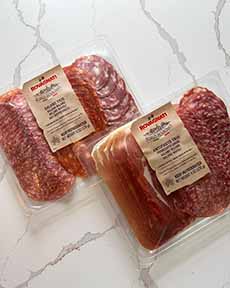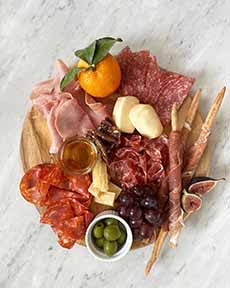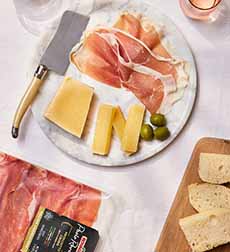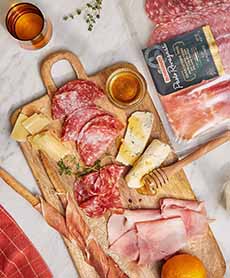Rovagnati Salumi For Every Day Plus Easy Entertaining
|
Rovagnati, a venerable Italian producer of salume, has brought its premium cold cuts to the U.S.—and they’re nitrate-free. Rovagnati uses an innovative and exclusive technology that removes nitrates and nitrites, providing a healthier option. That makes the brand better for you, worthy of your family and your guests. Rovagnati, which remains a family business, was begun in 1943 in Milan, Italy. Paolo Rovagnati’s vision was to create inventive meat products that raised the quality of salume in Italy. His vision has certainly come to pass! We’re so pleased with the two different trios we purchased for entertaining: We’ve come to love them so much that we now regularly enjoy them for lunch on homemade hero sandwiches. Check in your local market for the products, or head to the company website for more information. A word about nitrates and nitrates: Cured meats (bacon, ham, hot dogs, sausage, etc.) contain the chemical preservatives sodium nitrate and/or sodium nitrite. Sodium nitrate is added to preserve and enhance a meat’s flavors and shelf life (it protects against the growth of bacteria). When nitrates break down through cooking, digestion, or other means, they form nitrites, which are potential carcinogens. Manufacturers and the USDA claim that the level of nitrates/nitrites is too low to cause problems. But there is enough of a controversy that it makes some people wary of ingesting nitrates and nitrates. They’ve given up hot dogs and other cured meats. Some brands have created products that are free of nitrates and nitrates. We’re fans of Berkshire ham, for example. Rovagnati has you covered in the salume department, with Genoa salami, prosciutto, and soppressata that are hormone-free. Salume refers to artisan craft meats. It’s a broad category similar to the French term, charcuterie. Salumi refers specifically to cured or preserved pork products. Salami, the word most familiar to Americans, is a cured meat product that is made up of ground pork and shaped in a casing. There are many different types of salami, but they all start out the same way: The meat is minced, seasoned to the salumiere’s (the salami maker’s) style, and packed into a casing. It is then cured over time to develop and mature its flavors. Salami is produced with different flavor profiles, depending on the seasonings that are mixed in before curing. There are numerous regional varieties. Just a few:
|
|
|
|
__________________ *Prosciutto is the Italian word for ham. Prosciutto crudo is cured, normally in salt for a few weeks. The salt draws out blood and moisture, which prevents bacteria from entering the meat. It is then air-dried and aged. Cotto means cooked. Prosciutto cotto is a ham that has been brined and steamed. CHECK OUT WHAT’S HAPPENING ON OUR HOME PAGE, THENIBBLE.COM.
|
||







